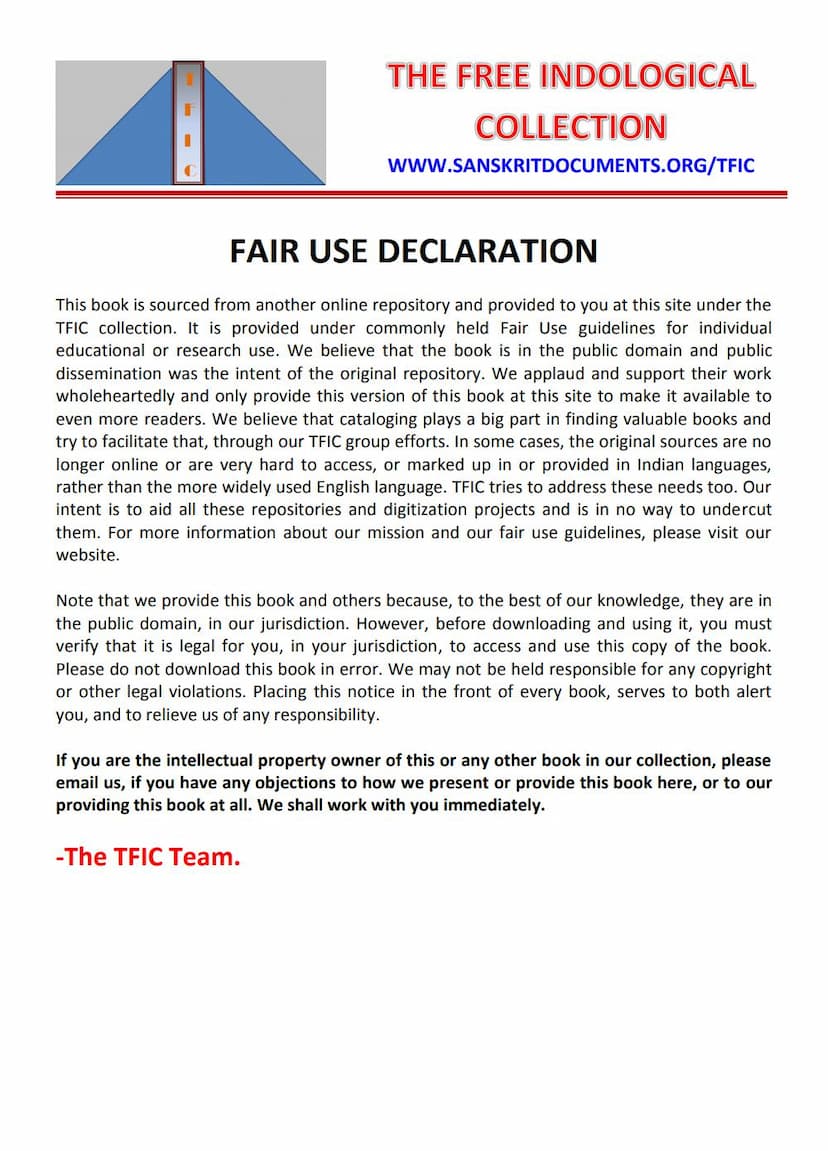Jain Tattva Samiksha Ka Samadhan
Added to library: September 2, 2025

Summary
This extensive Jain text, "Jain Tattva Samiksha ka Samadhan" (Solution to Jain Principle Review) by Fulchandra Jain Shastri, published by Todarmal Granthamala Jaipur, is a detailed exploration and defense of specific Jain philosophical tenets, particularly those related to the nature of causality, the relationship between the soul (Jiva) and matter (Pudgala), and the path to liberation (Moksha).
Central Theme: Causality and the Role of External Factors in Jain Philosophy
The core of the book revolves around a debate concerning the nature of causality, specifically addressing the role of external factors (nimitta) in the manifestations of the soul (Jiva) and matter (Pudgala). The author, Fulchandra Jain Shastri, defends a particular interpretation of Jain principles, often associated with the teachings of Kanji Swami, against critiques from scholars who advocate for a different understanding of these concepts.
Key Arguments and Concepts Discussed:
- Nishchaya Naya vs. Vyavahar Naya: A significant portion of the text delves into the distinction between Nishchaya Naya (the ultimate, absolute truth) and Vyavahar Naya (conventional, relative truth). The author emphasizes that while ultimately the soul acts independently, conventional language and understanding, necessary for practical guidance, acknowledge the role of external factors. The debate centers on how to interpret scriptural passages that appear to attribute causality to external factors.
- The Nature of the Soul (Jiva) and Matter (Pudgala): The text discusses how the soul and matter are fundamentally distinct and that one cannot cause the other's fundamental transformation. The soul's experiences, like passions (krodh, man, maya, lobh), are ultimately its own modifications, even when influenced by external factors like karmic emanations.
- Causality (Karya-Karana Bhav): A major point of contention is whether external factors (like karmas) are truly causes or merely occasional or supportive factors. The author argues that while the soul is the primary cause (upadan) of its own states, external factors, though ultimately impersonal and not directly participating in the soul's fundamental nature, act as incidental causes or occasions (nimitta) in the conventional sense.
- Critique of "External Dependency" Arguments: The author systematically addresses arguments presented by critics (referred to as "the reviewer" or "Vyakaranacharya") who seem to emphasize the necessity of external factors for spiritual progress, potentially leaning towards an interpretation that suggests a more direct causal role for external elements.
- Defense of Kanji Swami's Teachings: The book implicitly and explicitly defends the emphasis on Nishchaya Naya and the soul's self-sufficiency in liberation, often associated with the teachings of Kanji Swami. The author clarifies that this emphasis does not negate the practical importance of Vyavahar Naya but rather positions it as a means to understand and ultimately transcend to the ultimate truth.
- Specific Scriptural Interpretations: The text engages in detailed exegesis of various Jain scriptures and commentaries, analyzing specific verses and their intended meanings to support its arguments. This includes discussions on concepts like karma, purushartha (effort), yog, samvara, nirjara, and the different states of the soul.
- Rejection of "External Causation" as Absolute: While acknowledging conventional language, the author strongly refutes the idea that external factors are absolute or fundamental causes of the soul's spiritual state or its mundane existence. The soul's ultimate nature and liberation are presented as intrinsically within its own capacity, driven by its own inherent potential and understanding.
- The Role of Experience and Logic: The author contends that while logic and experience are valuable, they must ultimately align with the scriptural pronouncements of the Tirthankaras.
Structure and Tone:
The book is structured as a response to criticisms, addressing specific points raised by the reviewer. The tone is scholarly and argumentative, with the author meticulously dissecting the arguments of the opposition and presenting scriptural evidence and logical reasoning to support his position. The "Fair Use Declaration" at the beginning suggests the text is a resource for educational and research purposes, sourced from online repositories to increase accessibility.
In essence, "Jain Tattva Samiksha ka Samadhan" is a rigorous philosophical discourse within Jainism, aimed at clarifying and defending the nuanced understanding of causality and spiritual practice by emphasizing the soul's inherent capability and the ultimate truth of self-reliance in the path to liberation, while still acknowledging the practical role of conventional descriptions.